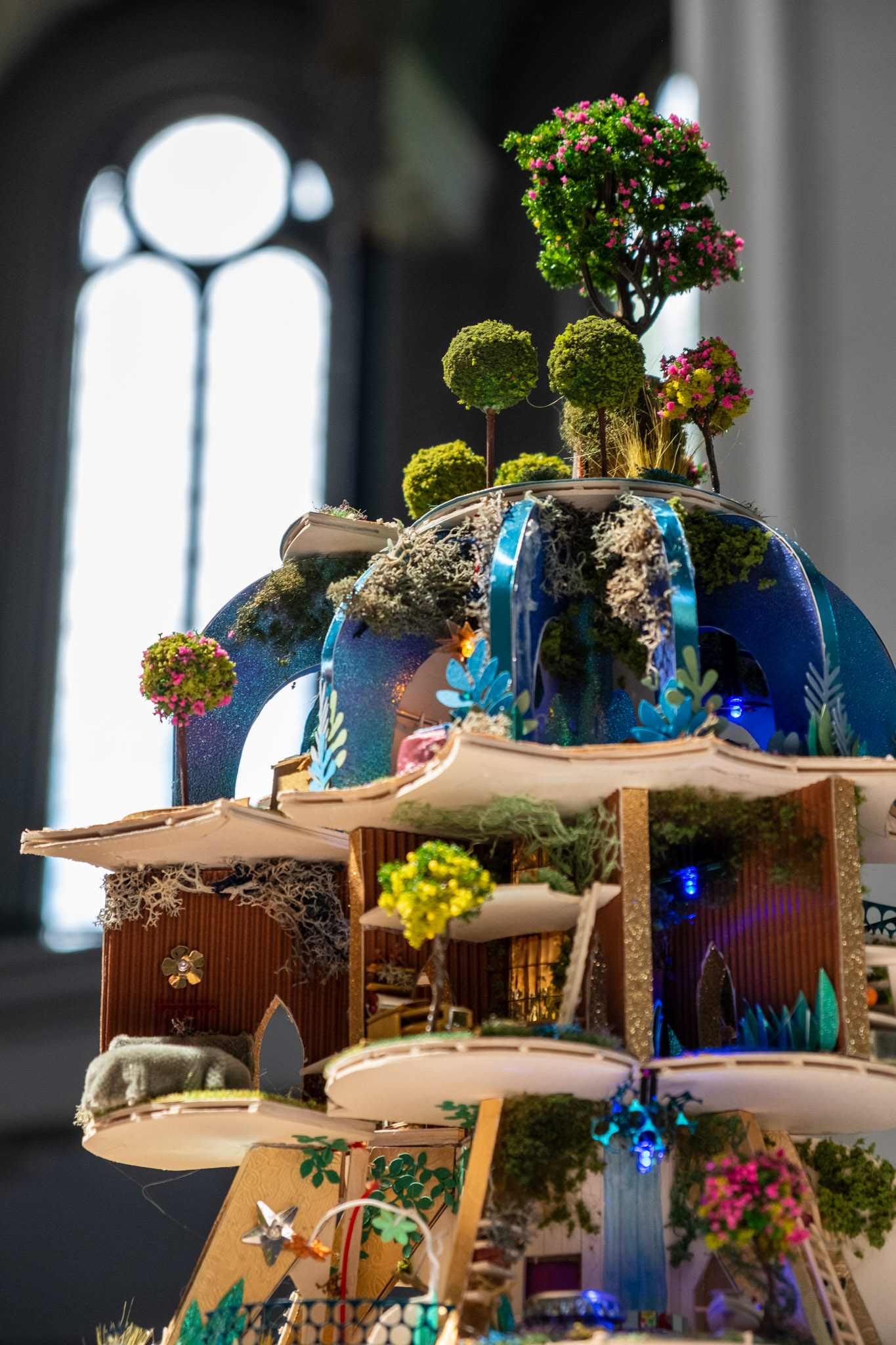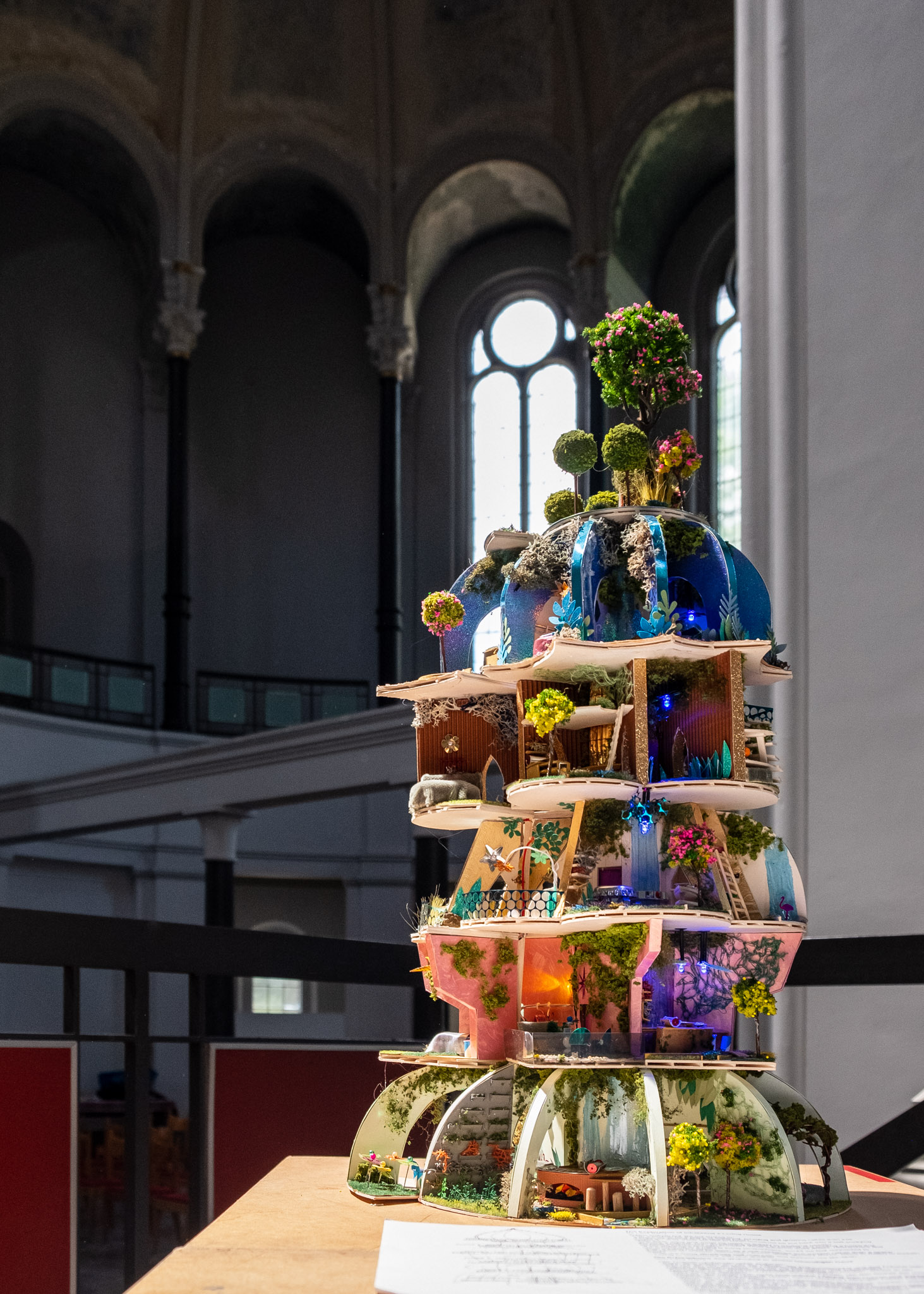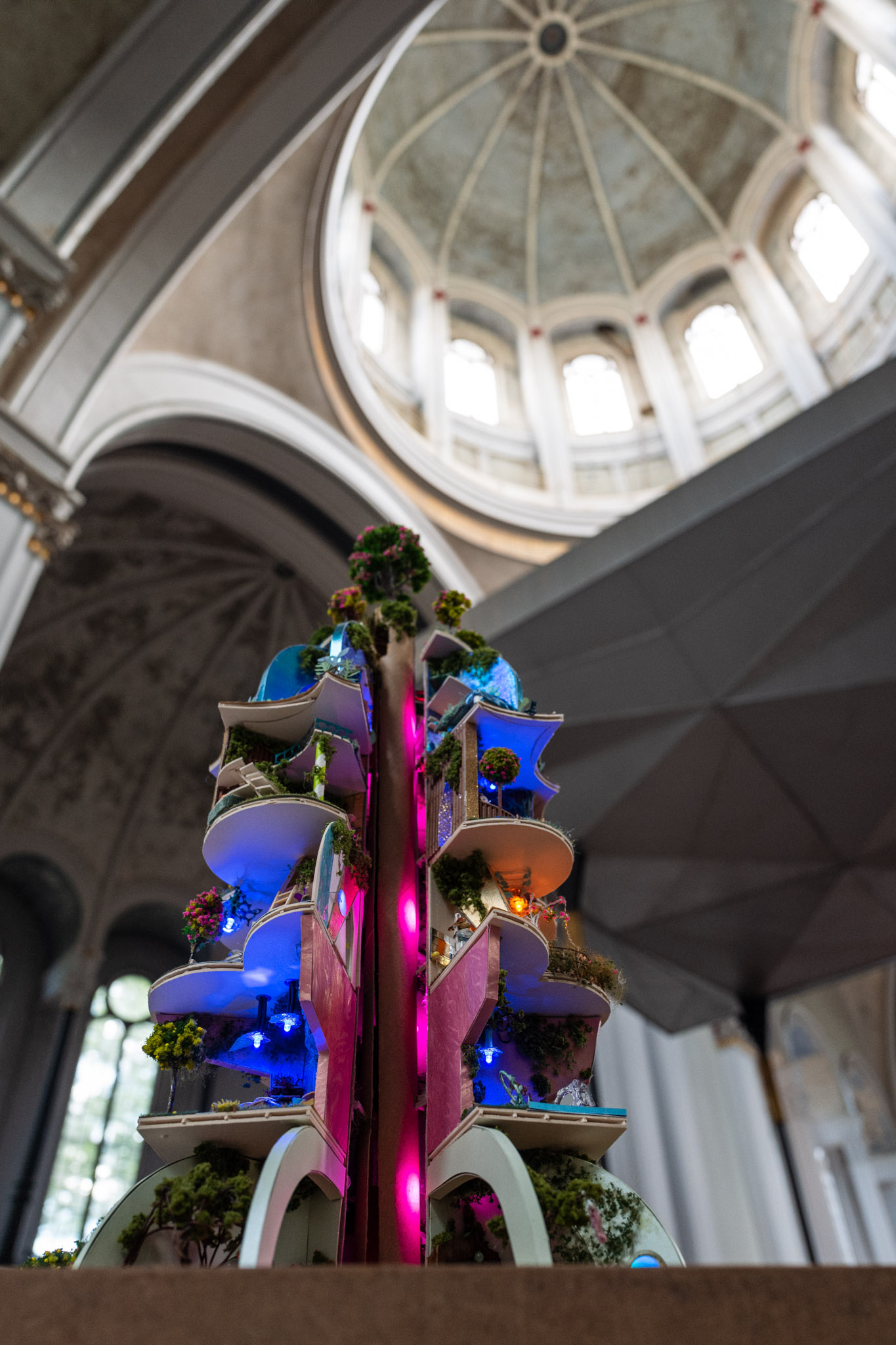The Exploration of Inhabiting a Living Home
Living Nature PillarsECOTOPIA
Eco/ Solarpunk Paper Light Art
date: May 2022
If we look at our architecture from the perspective of preservation, we understand our cities are actually places of prolonged pre-decomposition of materials. Clearly we are not following the natural laws of nature and perhaps realize how we build structures largely contribute to our current global climate state for mental, physical wellbeing and general societal discourse. We also can understand the opposite is true and that inhabiting living, self-sustaining dwellings are also possible. Working with nature as a collaborative partner can provide symbiotic benefits beyond shelter, a home can be a source for food, water and wellbeing. An example comes to mind of the living root bridges of Cherrapunji. Bridge systems that guide the living roots of the rubber tree to create bridges that have survived for over a millennia. Developed by the matriarchal tribes of Southern Meghalaya, this example shows a natural infrastructure that lovingly maintains itself even after the original humans are gone. Maintenance is minimal and brings humans ever closer to the biological wonder that is our natural environment… a relationship we have largely set ourselves apart from.


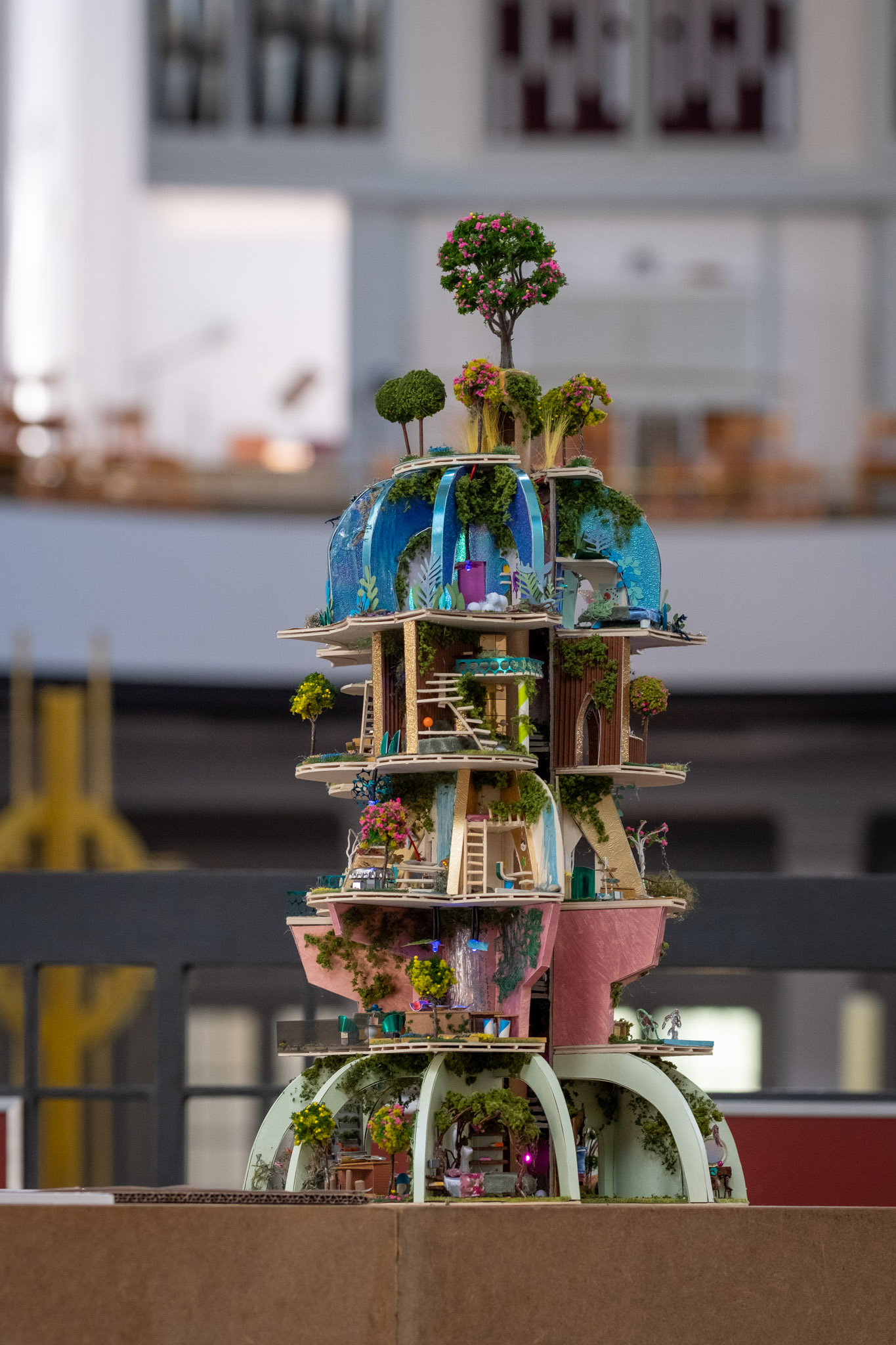
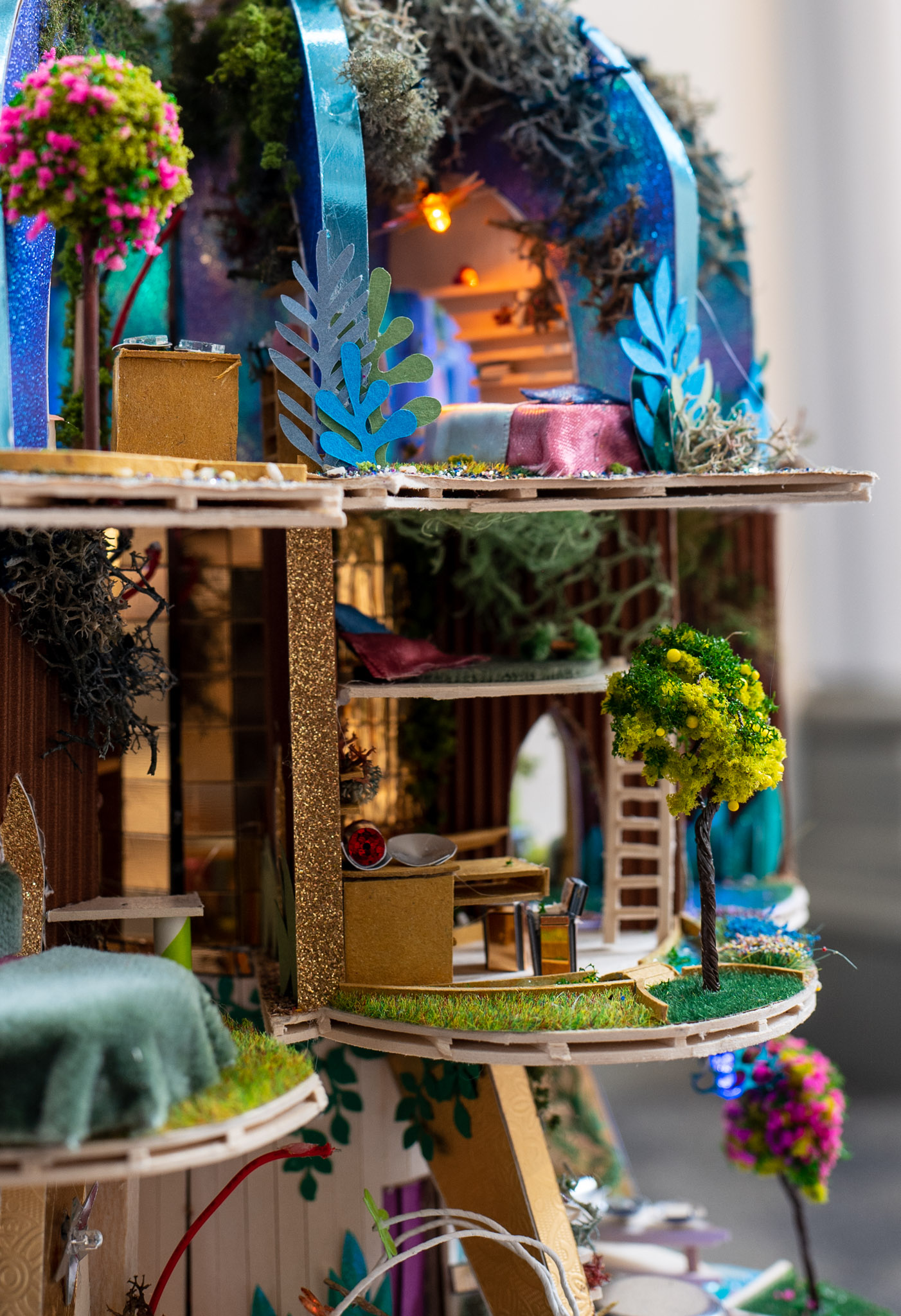
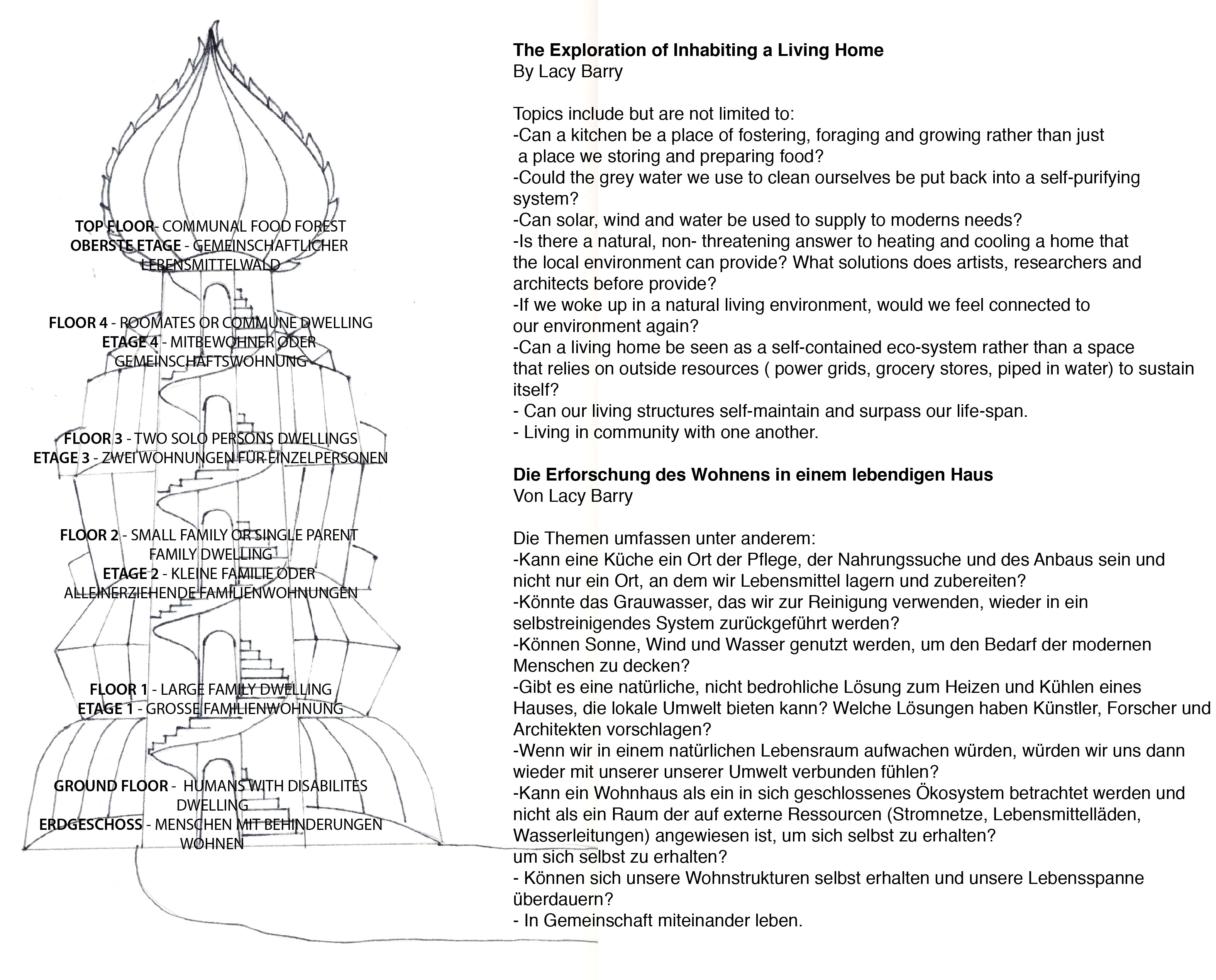
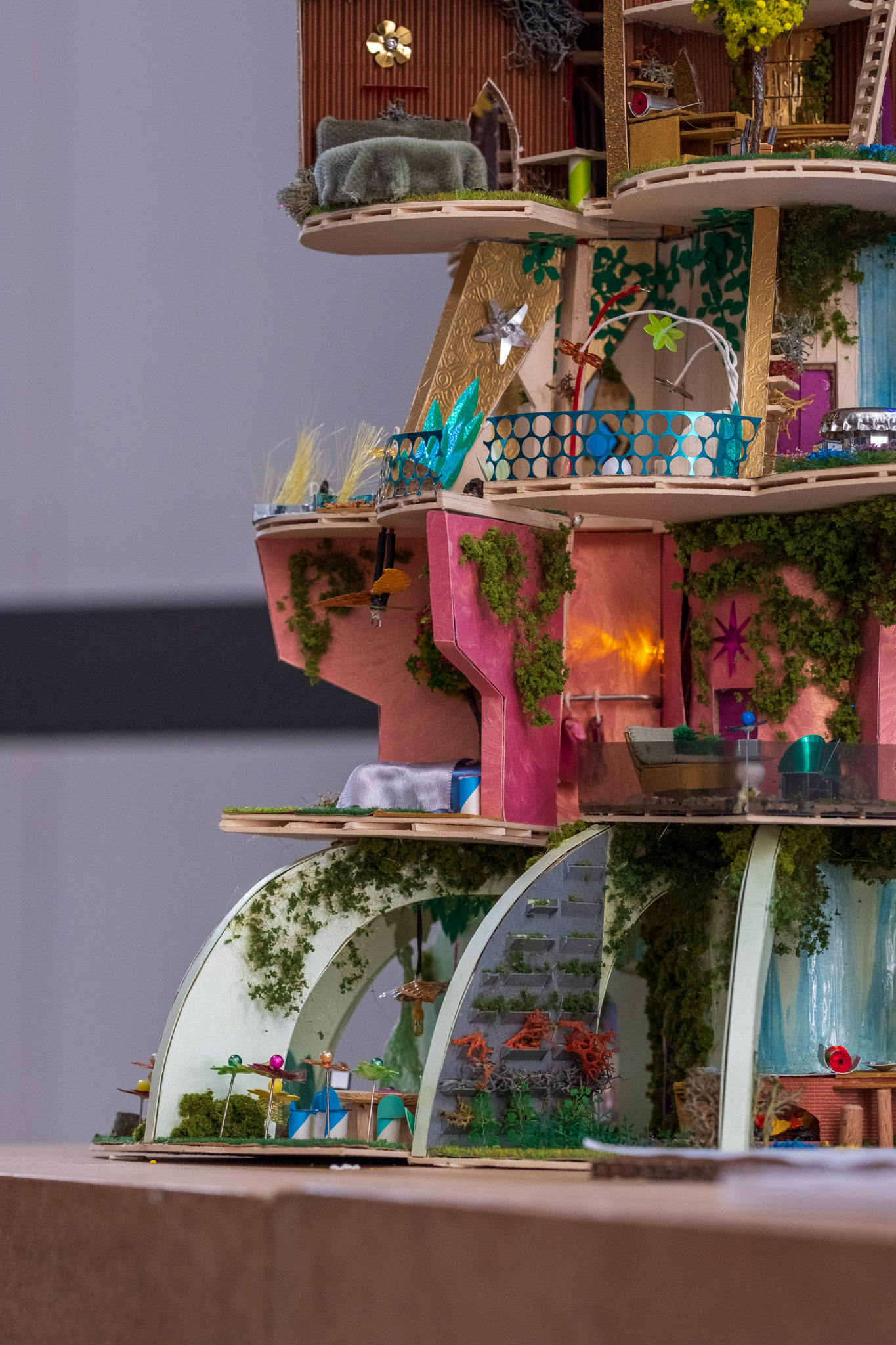
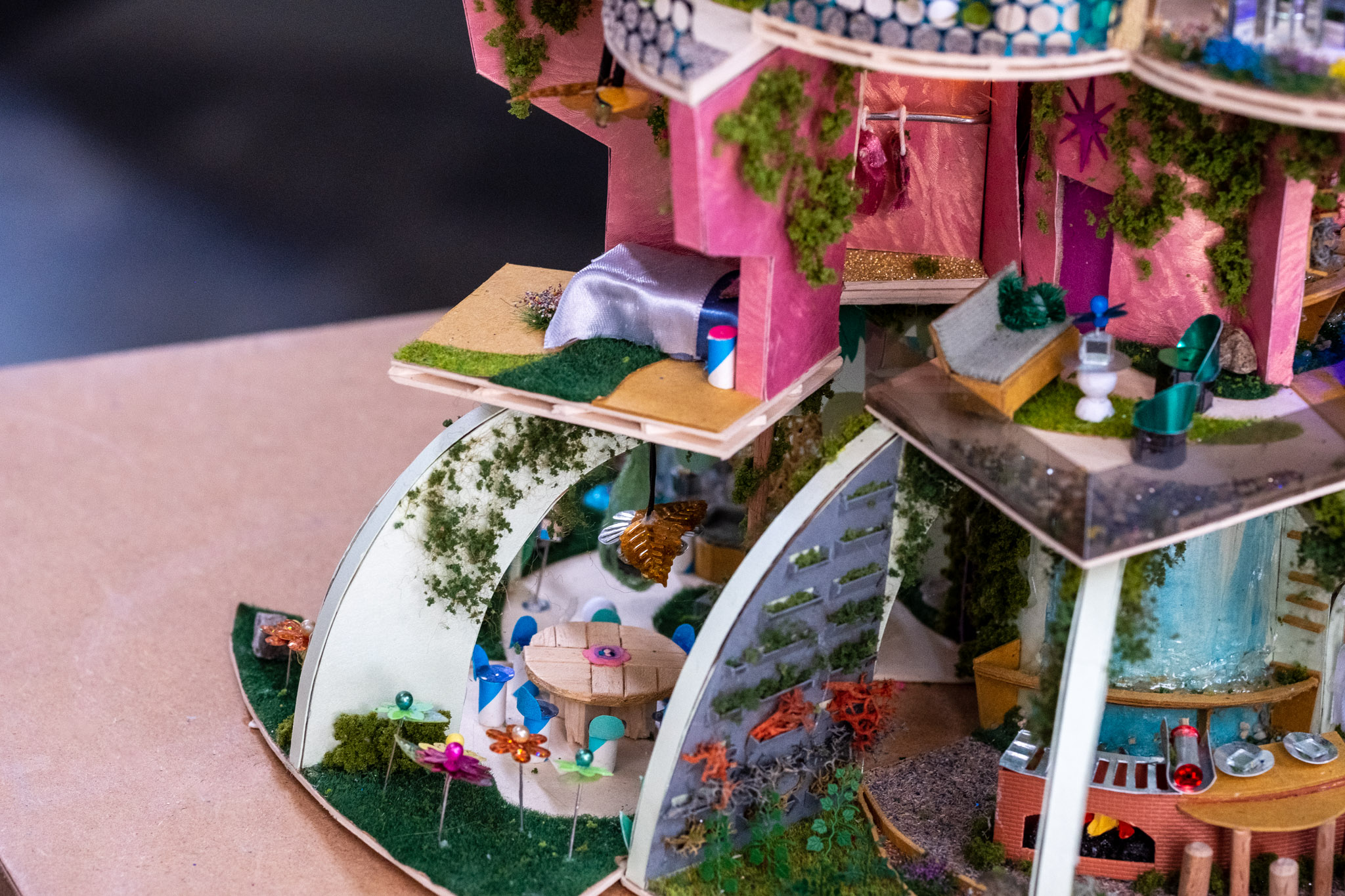
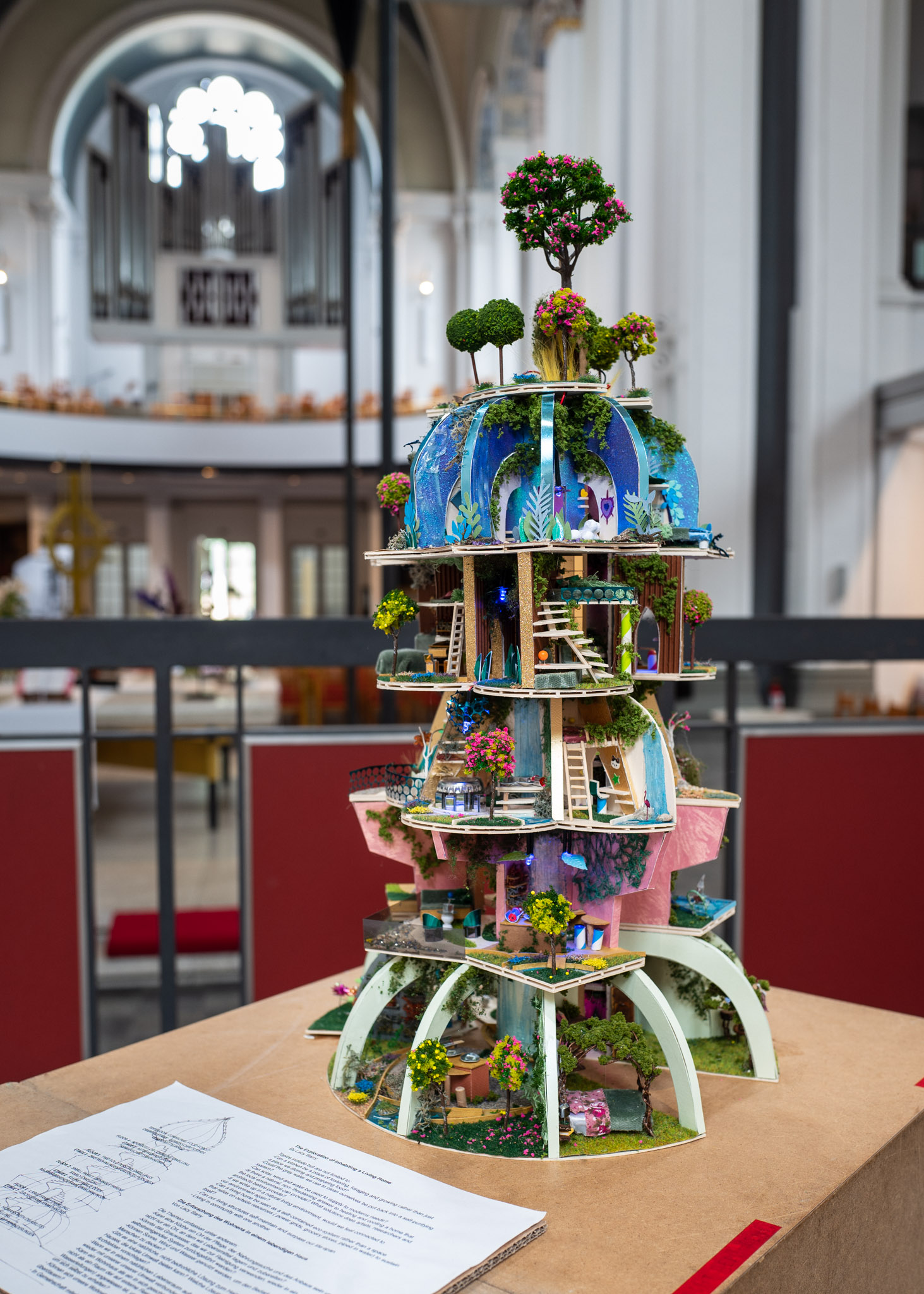
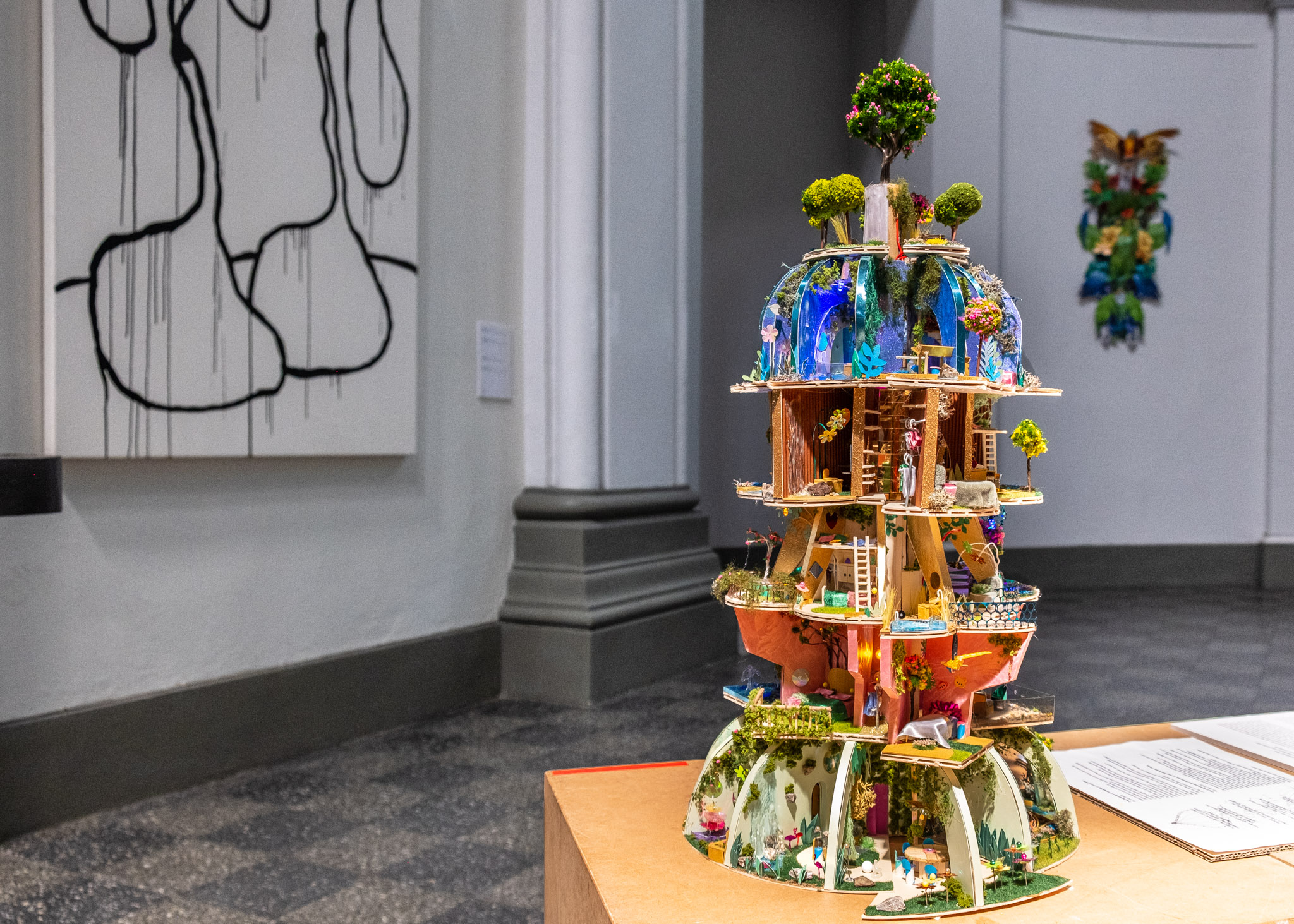
With this ‘Living Home’ I am personally discovering and exploring aspects of a natural living home not just as a dwelling but a source of food and plant cultivation, water and resource recycling, a place of physical, mental and spiritual well-being, a community with other humans, animals and nature.
Apart of Ecotopia, a group show exhibting eco-utopian and dystopian ideas for the future.
Medium: Model making materials, trash, recycled cardboard, various papers, LED lights, battery and/or solarpanel
Size: 30cm diameter x 65cm tall
When I was a child, I made the observation to my mother '
Mum, the walls are dead'. Much later in my life, I began to explore what this
statement meant to me then and now as an adult. Even at the tender age of five
years old, I understood the walls around me were no longer living rather
materials taken from living matter connected to this earth and maintained in a
sort of ‘purgatory’ state from decomposition. These dwellings, maintained by
humans and the systems humans are living in are preserved in a post-living state
by paints, chemicals and artificially created substances that fend off the
elements and rugged insects and animals that are meant to break it down and
build borrows in these deceased materials. Much like living in the hollowed out
carcass of an embalmed body, our homes eventually fall into decomposition when
we are no longer present to preserve them. This is the natural state of life, no
longer living things must break down and be turned into proteins and energy for
the next generation of life to begin. The natural lifecycle of, specifically
trees is clearly stated in the book ' The Hidden Life of Trees' by author and
forester Peter Wohlleben.
![]()
![]()
![]()
